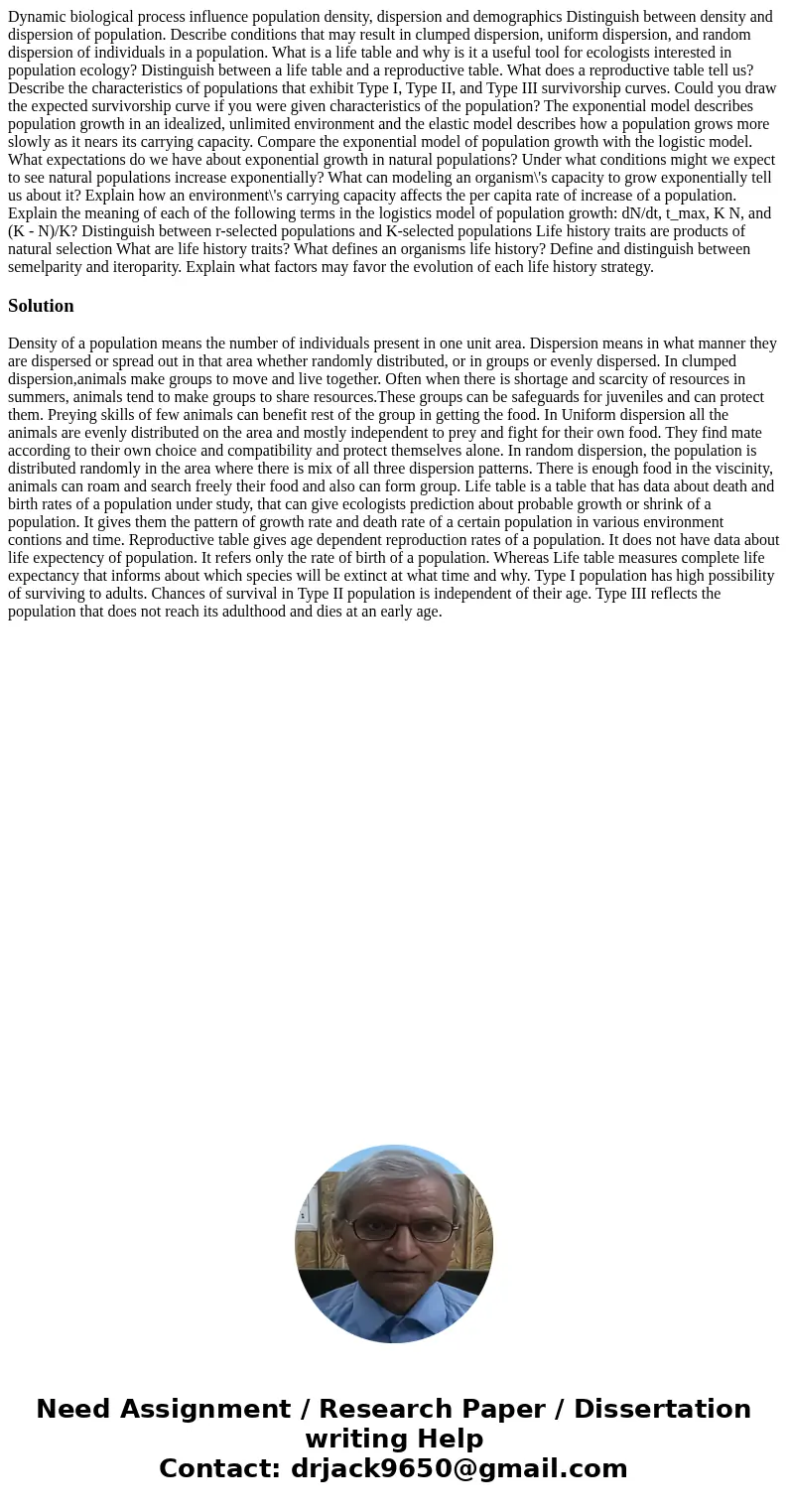Dynamic biological process influence population density disp
Dynamic biological process influence population density, dispersion and demographics Distinguish between density and dispersion of population. Describe conditions that may result in clumped dispersion, uniform dispersion, and random dispersion of individuals in a population. What is a life table and why is it a useful tool for ecologists interested in population ecology? Distinguish between a life table and a reproductive table. What does a reproductive table tell us? Describe the characteristics of populations that exhibit Type I, Type II, and Type III survivorship curves. Could you draw the expected survivorship curve if you were given characteristics of the population? The exponential model describes population growth in an idealized, unlimited environment and the elastic model describes how a population grows more slowly as it nears its carrying capacity. Compare the exponential model of population growth with the logistic model. What expectations do we have about exponential growth in natural populations? Under what conditions might we expect to see natural populations increase exponentially? What can modeling an organism\'s capacity to grow exponentially tell us about it? Explain how an environment\'s carrying capacity affects the per capita rate of increase of a population. Explain the meaning of each of the following terms in the logistics model of population growth: dN/dt, t_max, K N, and (K - N)/K? Distinguish between r-selected populations and K-selected populations Life history traits are products of natural selection What are life history traits? What defines an organisms life history? Define and distinguish between semelparity and iteroparity. Explain what factors may favor the evolution of each life history strategy.
Solution
Density of a population means the number of individuals present in one unit area. Dispersion means in what manner they are dispersed or spread out in that area whether randomly distributed, or in groups or evenly dispersed. In clumped dispersion,animals make groups to move and live together. Often when there is shortage and scarcity of resources in summers, animals tend to make groups to share resources.These groups can be safeguards for juveniles and can protect them. Preying skills of few animals can benefit rest of the group in getting the food. In Uniform dispersion all the animals are evenly distributed on the area and mostly independent to prey and fight for their own food. They find mate according to their own choice and compatibility and protect themselves alone. In random dispersion, the population is distributed randomly in the area where there is mix of all three dispersion patterns. There is enough food in the viscinity, animals can roam and search freely their food and also can form group. Life table is a table that has data about death and birth rates of a population under study, that can give ecologists prediction about probable growth or shrink of a population. It gives them the pattern of growth rate and death rate of a certain population in various environment contions and time. Reproductive table gives age dependent reproduction rates of a population. It does not have data about life expectency of population. It refers only the rate of birth of a population. Whereas Life table measures complete life expectancy that informs about which species will be extinct at what time and why. Type I population has high possibility of surviving to adults. Chances of survival in Type II population is independent of their age. Type III reflects the population that does not reach its adulthood and dies at an early age.
 Homework Sourse
Homework Sourse